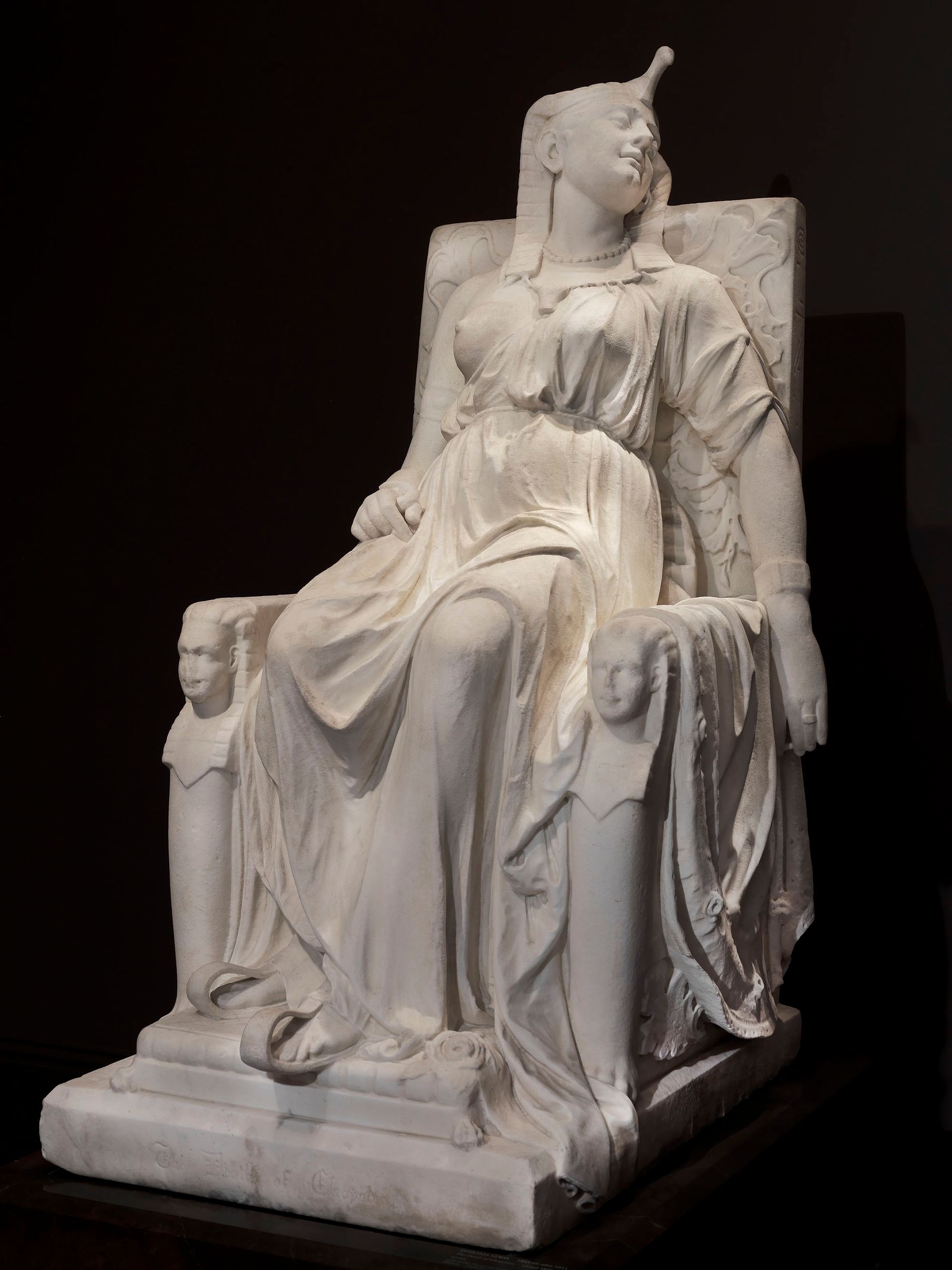Edmonia Lewis, the Black and Ojibwe sculptor who spent much of her career living in Italy, will be honored in her native country with a commemorative stamp that the United States Postal Service (USPS) will debut on 26 January at the Smithsonian American Art Museum. That museum is home to what is likely Lewis’s most famous extant work, her life-size marble statue The Death of Cleopatra (1875).
The new stamp, the 45th in the USPS’s “Black Heritage” series spotlighting the achievements of African Americans (past subjects have included the playwright August Wilson and abolitionist Harriet Tubman), will be available in panes of 20 for $11.58.
The stamp features a painted portrait of Lewis based on a carte-de-visite photograph that Augustus Marshall made of the sculptor during her seven-year stint in Boston (1864-71). The artist relocated there after four years at Oberlin College in Ohio, where she faced discrimination and racist violence, and was ultimately prohibited from graduating. In Boston she met and studied under the sculptor Edward Augustus Brackett, eventually producing portraits of well-known abolitionists. Sales of these helped her fund multiple trips to Europe during the 1860s, and the following decade she relocated to Rome.
“I was practically driven to Rome in order to obtain the opportunities for art culture, and to find a social atmosphere where I was not constantly reminded of my colour,” Lewis said in an 1878 interview with the New York Times cited in art historian Kristin Pai Buick’s book Child of the Fire: Edmonia Lewis and the Problem of Art History’s Black and Indian Subject (2010). “The land of liberty had no room for a coloured sculptor.”

Edmonia Lewis, The Death of Cleopatra (1876), Smithsonian American Art Museum Via Wikimedia
Though successful in her lifetime and considered by most accounts to have been the first professional African American sculptor, details of Lewis’s later life and death have only been unearthed recently and many of her works have not survived. Her best known, in addition to her Cleopatra, include the marble sculpture of two formerly enslaved figures Forever Free (The Morning of Liberty) (1867), which is in the collection of the Howard University Art Gallery in Washington, DC, and the biblical sculpture Hagar in the Wilderness (1875), which belongs to the Smithsonian American Art Museum.
Works by the Ojibwe Abstract Expressionist painter George Morrison will also be featured in a series of new “Forever” stamps from the USPS this year. Visual artists who have been recently commemorated with US stamps include the Japanese American sculptor Ruth Asawa (in 2020) and the hard-edged painter Ellsworth Kelly (in 2019).


